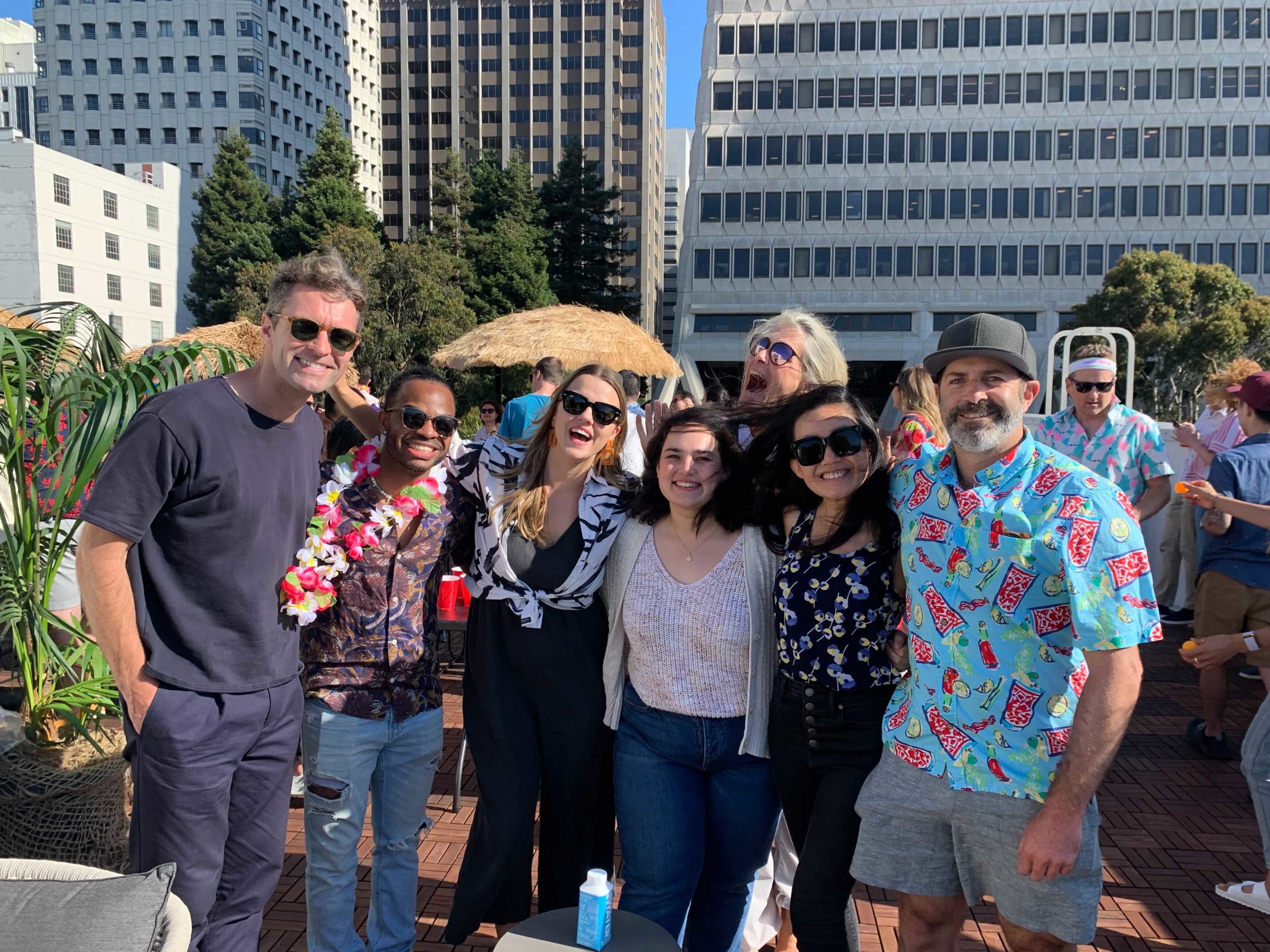Innovative Hiring Practices: The Tip of the Diversity & Inclusion Iceberg

By Leah Staub-DeLong, CRB Student Advisory Board & MBA ’17
In the tech industry and beyond, companies are increasingly recognizing the business and social value of recruiting and retaining more diverse teams. Companies are investing in more equitable hiring practices not only because it’s the right thing to do, but because more diverse companies are more likely to outperform compared to their less diverse peers. Haas is preparing its students to recruit and lead diverse teams in a variety of ways, including offering a new Diversity in the Workplace course — one of the best classes I’ve taken at Haas — taught by Github’s Nicole Sanchez.
Outside of the classroom, the Center for Responsible Business brought together representatives from Adobe, Microsoft, and IDEO early this month for a panel discussion on how to hire and retain a diverse workforce. Liz Lowe spoke about the Adobe Digital Academy, which creates a pipeline that funnels underrepresented minorities into technical roles. Devan Vaughn shared about Microsoft’s Autism Hiring Program, which is tailored for applicants on the autism spectrum. And IDEO’s Virginia Martin Martinez discussed how IDEO strives to bring in a more diverse workforce through every recruiting and onboarding touchpoint. Together with moderator Don Moore, our panelists highlighted a few nuggets of wisdom that I plan on taking with me into the working world.
Not Top-Down. Not Bottom-Up. Both.
All three panelists discussed the importance of buy-in from senior leadership in launching successful diversity and inclusion programs. For example, Microsoft’s Autism Hiring Program has had two executive sponsors since its inception (one of whom brought the perspective and experiences of a parent of a child with autism). Along the same lines, Adobe’s CEO has publicly stated his commitment to building a more diverse company. Though commitment from the top was critical to creating openness and resources to pioneer both programs, Lowe and Vaughn also emphasized the importance of stakeholder feedback. The Adobe Digital Academy was a bottom-up initiative, starting as a small project between the social impact team and HR. And the program evolved to include an additional mentorship component based on input from participants.
Think Outside the Lines
At IDEO, the recruiting team has taken steps to break away from hiring archetypes of existing employees. Instead of looking for “another Virginia” (which could lead to hiring someone who is exactly like Virginia in gender, race, background, etc.), the recruiting team focuses on skills, reframing the search to look for “someone with these attributes.” Martinez has also challenged recruiters to think beyond the role of traditional networked referrals in hiring, which can often lead to companies hiring people who look, feel, and sound like people already working at a company. In addition to modifying hiring practices to reduce bias, each of the panelists discussed the importance of expanding the talent pool by building relationships with institutions that can help bring more underrepresented candidates into companies. Microsoft is starting early in the pipeline by giving its programmers time to teach computer science courses to high schoolers at local schools, with the hopes of encouraging more students to pursue technical careers. As Martinez succinctly put it, “Don’t expect they’re going to find you” – recruiters need to make an active effort to go where their ideal candidates are if they truly want to diversify their teams.
Recruiting is Just the Start.
Hiring candidates from underrepresented backgrounds is just the tip of the iceberg when it comes to building and maintaining a diverse team. A truly diverse and inclusive workplace requires norms, policies, and culture that ensure all individuals feel comfortable at work, and are able to perform to their fullest potential. There are a number of practices that can help foster such an environment, from building a dedicated diversity and inclusion team to creating a culture where “diversity” isn’t an uncomfortable topic. Incorporating feedback from employees is also key. At IDEO, parts of the onboarding process were updated after a transgender employee shared some of the ways the previously gender-normative onboarding process made them feel excluded.
Silicon Valley has a lot of work to do before it can become truly representative of our country and world, but our panelists provided several examples of where to start. I plan to keep these lessons in mind as I transition back into the working world, and I challenge readers to do the same. Though the road is long, I am hopeful that one day, all workplaces in the Bay Area and beyond can be welcoming and inclusive to people from all backgrounds.
 Leah Staub-DeLong is a second-year MBA student at UC Berkeley Haas School of Business, where she has focused on fintech, responsible investing, and marketing. Prior to Haas, Leah worked with at a venture philanthropy fund, where she helped high-impact social enterprises to scale, oversaw new investment strategy, and launched a new fund focused on early learning. While at Haas, she was on the CRB Student Advisory Board, co-founded the FinTech club, and participated in the Haas Impact Investing Network. She plans on joining Intuit full-time in the fall, where she will work to help small businesses succeed as part of the QuickBooks team.
Leah Staub-DeLong is a second-year MBA student at UC Berkeley Haas School of Business, where she has focused on fintech, responsible investing, and marketing. Prior to Haas, Leah worked with at a venture philanthropy fund, where she helped high-impact social enterprises to scale, oversaw new investment strategy, and launched a new fund focused on early learning. While at Haas, she was on the CRB Student Advisory Board, co-founded the FinTech club, and participated in the Haas Impact Investing Network. She plans on joining Intuit full-time in the fall, where she will work to help small businesses succeed as part of the QuickBooks team.


